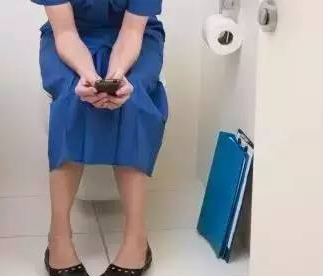
For most of us, the morning routine is a private affair, and what happens in the bathroom is quickly flushed and forgotten. But what if you were overlooking a daily health report—one that could offer crucial clues about your future well-being? While it may not be a topic for polite breakfast conversation, the color of your first morning stool is a direct message from your digestive tract, and it can indeed provide early warnings about your risk of developing certain serious conditions.
Before you worry, let’s establish the “normal” baseline. A healthy shade is typically a medium to dark brown, the color of a paper grocery bag. This color comes from bilirubin, a waste product produced by your liver when it breaks down old red blood cells, and from the beneficial bacteria that live in your gut.
When that color shifts dramatically and consistently, it’s your body’s way of posting a bulletin. Here’s what those color changes can predict.
The Warning: Pale, Clay, or Tar-Colored Stool
Potential Risk: Gallbladder or Pancreatic Issues
If your stool consistently looks pale, clay-colored, or even a light gray, it’s a sign that bile isn’t reaching your intestines. Bile is the digestive juice produced by your liver and stored in the gallbladder, and it’s what gives stool its characteristic brown color.
- What’s Happening: This can indicate a blockage in the bile duct, often from a gallstone, or a problem with the liver or gallbladder itself. It can also be a sign of pancreatic issues, as the pancreas plays a key role in fat digestion. When fats aren’t properly broken down, stools can become pale, bulky, and float.
- The Long-Term Risk: Ignoring this can lead to malabsorption of essential fat-soluble vitamins (A, D, E, and K), nutritional deficiencies, and the progression of underlying conditions like gallstones, pancreatitis, or in rare cases, tumors blocking the duct.
The Warning: Yellow, Greasy, and Foul-Smelling Stool
Potential Risk: Celiac Disease, Pancreatic Insufficiency, or Gilbert’s Syndrome
A consistently yellow hue, especially if the stool is greasy and floats, suggests your food is moving through your digestive system too quickly (diarrhea) or that fat isn’t being properly absorbed.
- What’s Happening: This can be a hallmark of Celiac disease, an autoimmune disorder where eating gluten damages the small intestine, preventing nutrient absorption. It can also point to Exocrine Pancreatic Insufficiency (EPI), where the pancreas doesn’t produce enough digestive enzymes. A more benign cause is Gilbert’s syndrome, a common and harmless liver condition that can cause a mild jaundice and yellow stool, especially under stress.
- The Long-Term Risk: Untreated Celiac disease or EPI leads to chronic malnutrition, weight loss, osteoporosis, and other serious complications due to the body’s inability to absorb nutrients.
The Warning: Black, Tarry Stool (Melena)
Potential Risk: Gastrointestinal Bleeding
This is one of the most critical signs to recognize. A black, sticky, tar-like stool that has a distinctive, foul odor is a medical red flag.
- What’s Happening: The black color indicates that blood has been digested on its journey through your upper digestive tract (esophagus, stomach, or the beginning of the small intestine). The digestive process turns the blood dark.
- The Long-Term Risk: This can signal a bleeding ulcer, severe inflammation (esophagitis or gastritis), or even esophageal or stomach cancer. This type of bleeding can be life-threatening and requires immediate medical attention. (Important Note: Iron supplements and Pepto-Bismol can also cause black stools, but they are usually not tar-like in consistency.)
The Warning: Bright Red Stool
Potential Risk: Lower GI Bleeding or Hemorrhoids
Seeing bright red blood in or on your stool can be alarming. The location of the bleeding is typically in the lower GI tract.
- What’s Happening: The most common cause is hemorrhoids or a small tear in the anus (anal fissure). However, persistent bright red blood can also indicate more serious conditions like inflammatory bowel disease (Crohn’s disease or ulcerative colitis), diverticulosis, or polyps and colorectal cancer.
- The Long-Term Risk: While often benign, any unexplained rectal bleeding warrants a doctor’s visit to rule out precancerous polyps or colorectal cancer, for which early detection is crucial.
How to Use This Information
Your first morning stool is a snapshot of your digestive health from the day before.
- Don’t Panic Over One Day: A single unusual color is often linked to diet (beets, green leafy vegetables, food coloring). The concern is with persistent change.
- Keep a Mental Log: If you notice a color change that lasts for more than two or three days, take note.
- See Your Doctor: Describe what you’ve seen. Be specific: “My stool has been a pale clay color for several days,” or “I’ve noticed bright red blood consistently.”
- Get Screened: Especially for those over 45, a colonoscopy is the gold standard for detecting the causes of bleeding and preventing colorectal cancer.
The color of your first morning stool is a free, daily diagnostic tool. It’s a direct line of communication from your gut, offering a glimpse into the complex workings of your liver, gallbladder, pancreas, and intestines. By learning to read these signals, you empower yourself to catch potential health issues early, turning a moment of private observation into a powerful act of proactive healthcare.